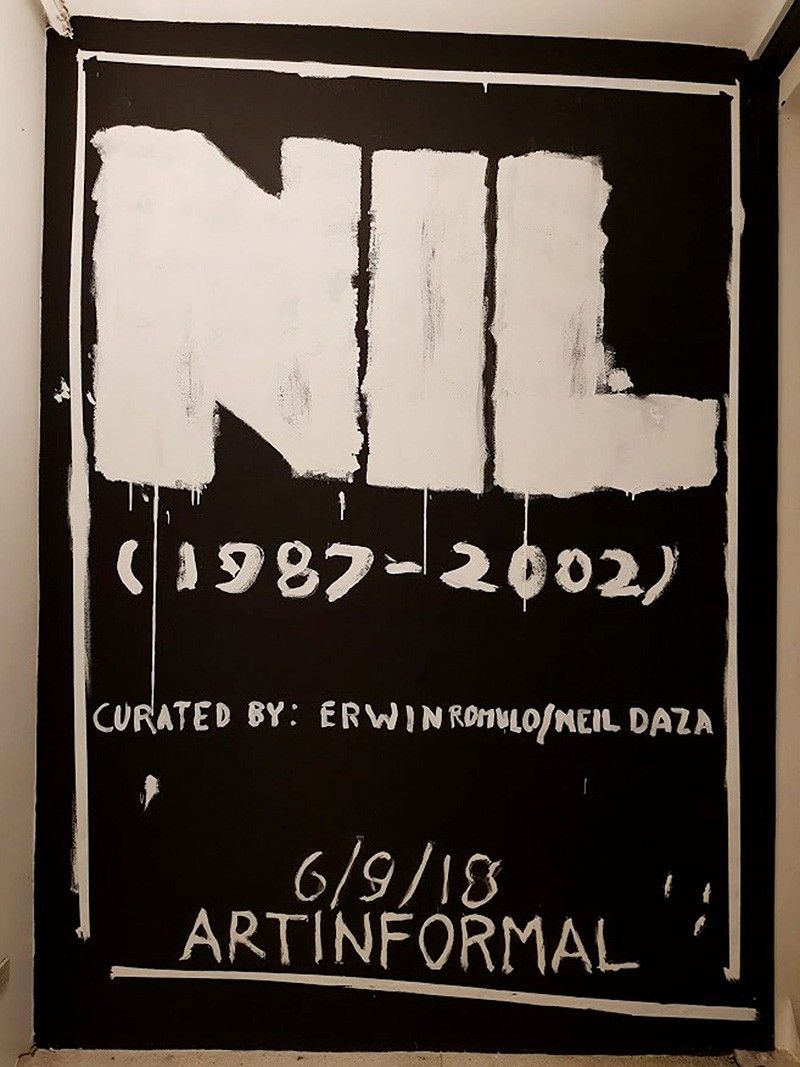I was silent in the face of hangings


By mounting the show in a gallery, the shock of ‘Nil’ lies not in what it does to the photos — no, it doesn’t consecrate them as visual art — but what it does to us, the viewers.
I usually know what I am expected to do in a gallery which, more often than not, involves a staring game with hanging objects. In “Nil,” this easy enough task was predictably painful to perform. As I stood in a room with images of bodies violated by another — or bodies, hanging on ropes, now revealed in full view — I wasn’t sure which response would pay respect or give offense: Was it to look or not look?
Violence comes to us second-hand, through the many comfortable buffers of media. I had to remind myself that the exhibit, too, acted as a kind of buffer. It kept us near, as much as it kept us out, simultaneously provoking us and numbing us. It’s the tension I had to contend with throughout the whole exhibit.
“Nil,” on view until July 14 at Artinformal in Greenhills, was curated by Neil Daza and Erwin Romulo. It rounds up photographs dated from 1987 to 2002 taken by photojournalists covering the crime beat. Daza, before having been recognized as a filmmaker, was a photojournalist for publications such as Malaya. Romulo, the editor, producer and curator who was also responsible for “Everyday Impunity” at Art Fair Philippines 2018, seems intent on pushing the boundaries of what an art exhibition can contain.

Artinformal’s Tina Fernandez, curators Neil Daza and Erwin Romulo
In a gallery, death is often food for metaphor, borrowing the appearance of black void or white blur, blankness and markers of absence. In “Nil,” however, it appears in masses — the suffocating sight, the imagined stench and swell of bodies. It isn’t absence but thick and unbearable physical presence. It isn’t just “nil” as “annihilation” but as Bert Sulat Jr. put it in his essay for the show, “nil” as in “nilalanggam,” “nilalamok,” “nilalaman.”
I saw the exhibit during the launch of the zine, Puyat, a compilation of photographs and poetry referencing current-day events and violence. Writers read their pieces while musician Dong Abay sang the Ama Namin in the end. Gathered outside the gallery, it felt as though we were holding a requiem for a burning house.
And very often did “Nil” acquaint us with the feeling of being burnt. In the Red Room, which could be accessed by going into one room and then inside another, the terror wasn’t so much concentrated on the effect of the images — some of the photos were actually the same ones presented outside — but by the mass of photographs scattered and arranged, by the deluge of narratives in so small a space, by the staged red glow, the heat, and the feeling of being constrained and confined. Perhaps it wasn’t only the sensation of being burnt, but the claustrophobic terror of being bodies robbed of air.
Without editorial commentary accompanying the photographs, what we’re left with was the shock of the violated body, or the thought that every conflict would ultimately bear down deeply on the body. In the course of viewing “Nil,” it was easy to forget that two decades have passed since these photographs were taken. Each work was in conversation with the present. The dates on the photos appear to mock us for paying attention only now, because before social media has allowed deaths to be shared and hurled and thrown, these killings have transpired even without the validation of the public looking.
But does someone really need to look? Put differently, was it necessary for all of these images to be seen?

Musician Dong Abay performs a song on tragedy and the Ama Namin.
The initial question I had about the exhibit had to do with the space one entered before the Red Room, the one where images of suicides were contained. In the months wherein the public has been made more aware of the issue through news reports, why was it necessary for the exhibit to include suicides in a show on crimes? Would it mean categorizing it as one?
Yet here, the show’s concern wasn’t what categories to put these subjects in, but rather what role it wanted the viewers to play. Spectators were asked to be witnesses, and not only to observe as a bystander does, but to be the witness that turns a doubtful eye on the taking of one’s life, and see the possibility of a murder disguised as suicide. In the end, a photo is only cold, hard evidence appealing only for a cold, hard gaze. For the moment, I was asked to borrow the gaze of someone else close enough to the scene of the crime that the nearness would give me distance. It would compel me to be callous. It would train me to be calm.
By mounting the show in a gallery, the merit of “Nil,” or the shock of “Nil,” lies not in what it does to the photos — no, it doesn’t consecrate them as visual art — but what it does to us, the viewers. This transformation — the process of desensitizing the gaze — isn’t specific to a gallery, but one which occurs again and again elsewhere: during midnight beats, in the streets, in the red heat of police stations.
In light of what is happening now, how close do these eyes need to be, to see a violated body or to violate a body, to look at death in the eye and win the staring game?



















